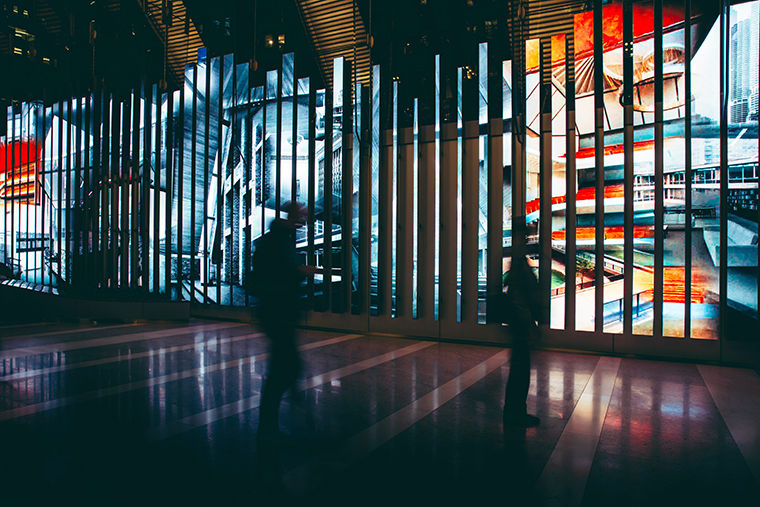Blast from the past: Project captures history through technology
Chicago 00 creates projects to teach the audience about history through technology. Its newest project, “Chicago 00: Spaces,” uses LED Beams at 150 N. Riverside Plaza to capture 50 years of Chicago architecture.
December 11, 2017
The Chicago History Museum and a new technology partner are using the latest in display tools—89 LED blades, smartphones and augmented reality—to turn a commercial building lobby into a wall of more than 50 years of Chicago architecture photographs.
The museum has partnered with Chicago 00, an initiative started in 2015 by John Russick, vice president of Interpretation and Education at the Chicago History Museum, and Geoffrey Alan Rhodes, associate professor in the Department of Visual Communications and Design at the School of the Art Institute of Chicago.
Russick and Rhodes’ newest project, “Chicago 00: Spaces,” captures Chicago’s architecture from 1929–1979 and uses 150 Media Stream—Chicago’s largest LED display system—to bring the history to life. The project will be on display at 150 Media Stream, 150 N. Riverside Plaza, until Jan. 31 during limited viewing hours.
“It is not like we can never access these pictures, but we need a way to spend the time to just look at them and consider them,” Rhodes said. “This one is about thinking [about architectural] history and Chicago and [to] consider this idea of how the city has been captured and how does someone approach looking at it.”
With support from the Chicago History Museum, 1601 N. Clark St., the Princess Grace Awards and the National Endowment for the Arts, Chicago 00 created augmented reality apps users can download on their smartphones to follow historical Chicago events, such as the St. Valentine’s Day Massacre in 1929 and The Eastland Disaster in 1915.
With so many people using smartphones, converting historical moments into an app is an intriguing way to connect with users virtually, said Nick McCormick, an adjunct professor in the Humanities, History and Social Sciences Department.
“In this day and age, [history signs] will probably get vandalized or graffitied,” McCormick said. “With something on your device, you can upload it and scan a code and you get this amazing virtual experience, as well as see what used to stand there or how the area has changed.”
With digital media, Russick said Chicago 00 can craft the experience to how the audience would want to see history.
Russick said he would like the project to help people see their lives differently and not only notice that what they see was shaped by history, but they are also a part of history.
“New technology allows us to not always have to attract people to come to the corner of North Avenue and Clark Street to be inside the Chicago History Museum,” Russick said. “Now [with] these kinds of digital experiences, we can put more meaningful content on your phone or tablet, so you can have these kinds of experiences wherever you are.”







